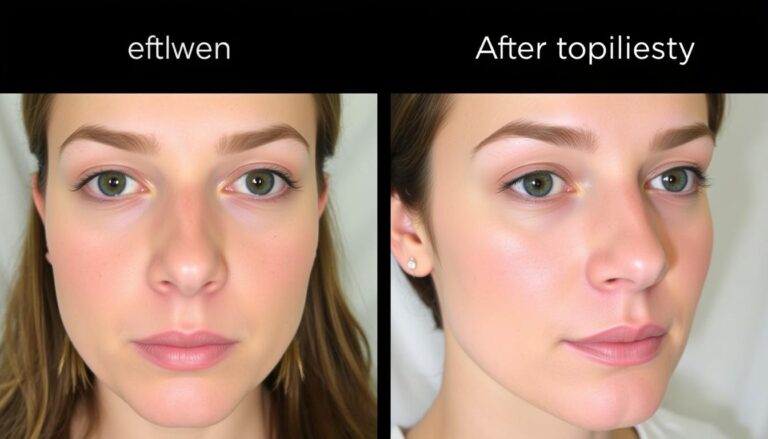Best Plantar Fasciitis Braces for Pain Relief
Rachel sank into her couch after a long day, looking forward to rest. But when she tried to stand up, a sharp pain in her heel stopped her. She knew the pain was from plantar fasciitis, a common issue that made everyday tasks hard.
She started looking for ways to ease the pain and found plantar fasciitis braces. With so many types available, from lightweight night splints to supportive orthotics, she wanted to find the best one. She hoped it would help her feel better and move freely again.
Finding the right support is key to feeling better. By trying different treatments, including braces for plantar fasciitis, Rachel aimed to get back to her active life. In this article, we’ll look at various braces and their benefits. We’ll see how each one can help with pain relief.
Table of Contents
Understanding Plantar Fasciitis
Plantar fasciitis is a common cause of heel pain, affecting about one in ten people at some point. It happens when the plantar fascia, a strong tissue band, gets inflamed. This tissue connects the heel bone to the toes at the foot’s bottom.
When it gets overstretched or stressed, tiny tears can form. This leads to pain, especially after sitting or standing for a long time.
People with plantar fasciitis often feel sharp pain on the foot’s bottom, mainly in the arch. This pain can get worse over time. Swelling at the heel can also happen, making everyday tasks hard.
This condition is more common in people aged 40 to 60, especially those who do a lot of running, dancing, or standing. Some groups, like ultra-orthodox Jewish women, are at higher risk due to their footwear choices.
Rest is often advised for many conditions, but it can make plantar fasciitis worse. This shows the importance of finding the right treatment.
Approximately 90% of people with plantar fasciitis get better without surgery. But, if it doesn’t get better fast, it can take up to 10 months to heal.
Knowing what causes plantar fasciitis helps people find the right treatment. This can help reduce heel pain and get back to normal activities.
Common Causes of Plantar Fasciitis
Plantar fasciitis is a common issue that causes heel pain. It often stems from fallen arches. This condition puts extra stress on the plantar fascia, leading to inflammation and pain. It makes everyday tasks hard.
Being overweight is another big factor. Carrying extra weight puts more pressure on the feet. This stress can make plantar fasciitis more likely to happen.
As people get older, they’re more likely to get plantar fasciitis. This risk is highest between 40 and 60 years old. Feet naturally wear down over time, affecting the plantar fascia. Athletes who do a lot of running or dancing are also at higher risk.
Standing for long periods on hard floors can make it worse. Activities that involve a lot of repetitive impact can cause tiny tears in the fascia. These tears lead to ongoing inflammation and pain. Knowing the causes of plantar fasciitis helps people prevent it and get treatment early.
For more info on health issues and catching problems early, check out this resource.
Symptoms of Plantar Fasciitis
People with plantar fasciitis often feel heel pain that can really affect their day. This pain is sharp and gets worse after resting, like in the morning or after sitting a lot. Taking that first step in the morning can hurt a lot, making mornings tough.
But, moving around and putting weight on the foot makes the pain lessen. However, running or standing for a long time can make the pain worse. It’s important to notice these signs. The symptoms include:
- Sharp pain in the heel
- Stiffness, especially after periods of inactivity
- Increased discomfort during weight-bearing activities
- Feeling a dull ache over time
Spotting these signs early can help manage the pain of plantar fasciitis. Taking steps to treat it and making lifestyle changes can make life better.
| Symptom | Description | Timing of Pain |
|---|---|---|
| Heel Pain | Sharp, stabbing pain often felt upon waking | Most pronounced in the morning or after immobility |
| Stiffness | Tightness in the heel and arch areas | Worsens after long periods of sitting or resting |
| Aching | Dull, persistent ache during the day | Increases with prolonged standing or activity |
Benefits of Using a Plantar Fasciitis Brace
Millions suffer from plantar fasciitis, causing sharp pain in the heel. A plantar fasciitis brace offers key support for the foot. It helps reduce strain on the plantar fascia, easing pain and aiding healing.
The OrthoSleeve brand is known for quality orthopedic products, including for plantar fasciitis. Their braces use graduated compression to improve circulation, reducing inflammation and discomfort. They also have moisture-wicking materials to keep feet dry and comfy.
OrthoSleeve braces give great heel and ankle support. This lowers the chance of further injury, letting people stay active. They fit well with many shoes, from casual sneakers to formal ones, making them versatile.
Night splints are great for plantar fasciitis pain, especially in the morning. They keep the plantar fascia stretched during sleep, improving blood flow and reducing swelling. This is a non-drug, non-invasive way to treat the condition.
Using a plantar fasciitis brace helps with recovery and better foot function. Regular use can lead to lasting relief from symptoms. Addressing related issues like tight calf muscles and limited ankle mobility, along with braces, offers a full solution to this common problem.
Types of Plantar Fasciitis Braces
There are different types of plantar fasciitis braces to choose from. Each one is made for a specific purpose. They help relieve pain and make moving easier.
Night Splints
Plantar fasciitis night splints stretch the plantar fascia while you sleep. They keep your foot bent, which helps reduce pain in the morning. Many people say these splints make their mornings much more comfortable.
Compression Sleeves
A compression sleeve fits snugly around your arch and heel. It provides support and helps reduce swelling. These sleeves are light and can be worn all day. People like how they support their foot without limiting movement.
Orthotic Braces
Orthotic braces give extra arch support and help keep your foot in the right position. They often have cushioned insoles for comfort. Many find these braces help manage their plantar fasciitis, making it easier to move around.
| Type of Brace | Purpose | Price Range | Customer Reviews |
|---|---|---|---|
| Night Splints | Stretching the plantar fascia during sleep | $12.99 – $39.99 | 105 reviews (Walgreens) |
| Compression Sleeves | Support and reduce swelling | $9.99 – $34.99 | 18 reviews (Copper Fit) |
| Orthotic Braces | Arch support and proper alignment | $20.00 – $35.00 | 183 reviews (Dr. Scholl’s) |
Factors to Consider When Choosing a Plantar Fasciitis Brace
Choosing the right plantar fasciitis brace is key to your comfort and experience. Think about comfort, fit, material, and breathability. Also, consider how adjustable the brace is to meet your needs.
Comfort and Fit
Comfort is crucial when picking a plantar fasciitis brace. A well-fitting brace supports your foot without causing pain. It also means you can wear it all day without discomfort.
Material and Breathability
The materials used in the brace matter a lot. Breathable fabrics keep you cool and dry, making it more comfortable. This is vital if you plan to wear the brace for a long time. High-quality, breathable materials make a big difference in your comfort and how often you use the brace.
Adjustability Options
Adjustability is another key factor. A customizable fit lets you adjust the brace as needed. This is great for when your foot swells or hurts in different places. A well-adjustable brace can really help with pain relief.
By looking at these factors, you can pick a plantar fasciitis brace that supports your foot and fits your life. For more on body positivity and self-acceptance, check out this resource.
Top Features of the Best Plantar Fasciitis Braces
Finding the right plantar fasciitis brace can make a big difference in your comfort and pain relief. The best braces have key features that help manage the condition well. Knowing these features can help you pick the right support for your needs.
Arch Support
Good arch support is key to preventing plantar fascia overstretching. The best braces have a strong yet flexible arch design. This design spreads your weight evenly and takes pressure off your heel. It makes daily activities less uncomfortable and gives you solid stability.
Shock Absorption
Braces with shock absorption technology lessen heel impact when walking or standing. Many top braces use materials that cushion the foot, reducing stress on the plantar fascia. This not only makes you more comfortable but also helps with long-term pain relief.
Lightweight Design
A lightweight design makes wearing a plantar fasciitis brace more comfortable. It means you can wear it for longer without getting tired or irritated. A comfy brace makes it easier to stick to your treatment plan, leading to better plantar fasciitis management.
| Feature | Importance | Frequency in Braces |
|---|---|---|
| Arch Support | Prevents overstretching of plantar fascia | 55.56% |
| Shock Absorption | Reduces impact on heel | N/A |
| Lightweight Design | Improves comfort for extended wear | N/A |
| Adjustable Features | Enhances individual fit | 66.67% |
| Compression Technology | Boosts blood circulation | 44.44% |
| Gel Pad Features | Offers extra cushioning | 22.22% |
How to Properly Use a Plantar Fasciitis Brace
Using a plantar fasciitis brace correctly is key to getting the most out of it. Start by wearing it while sitting to adjust and secure it well. Make sure it fits snugly. Adding an athletic sock under the brace can make it more comfortable.
Don’t wear the brace when walking or doing activities that put weight on your feet. This is what the product guidelines suggest. It helps prevent putting too much strain on your feet.
If you feel pain, swelling, or any unusual reactions from the brace, see a doctor. Keeping your brace clean is important too. Wash the liner in cold water and let it air dry. Clean the shell with a damp cloth to keep it in good shape.
Some people might have skin issues or allergies to neoprene. So, be aware of this before using the brace. Each brace comes with a six-month warranty for repairs or replacements if there are defects.
If you have questions or concerns, customer service is there to help. Remember, the brace is not a replacement for medical advice. For more tips on staying healthy, check out this link. Using your plantar fasciitis brace correctly can help ease pain and support your recovery.
When to Seek Medical Attention for Plantar Fasciitis
Knowing when to get medical help for plantar fasciitis is key to managing it well. Most people get better with treatments like rest and ice. But, there are times when seeing a doctor is a must.
- Persistent heel pain despite using a plantar fasciitis brace can mean you need more help.
- Swelling or tenderness in the foot that doesn’t go away with rest and ice is a red flag.
- If walking or doing daily tasks gets harder, you should talk to a healthcare provider.
- Not being able to rest comfortably or at night could mean a bigger problem.
- Signs of complications, like more pain or trouble bearing weight, call for quick medical help.
About 80-90% of people get better with treatments like rest and ice. If pain lasts 6 to 12 months, surgery might be an option. Things like walking boots, injections, or shock wave therapy can also help.
Keep an eye on how you’re doing and talk to your doctor about any changes. Always put your health first and don’t hesitate to get professional advice when needed.
| Indicator for Medical Attention | Recommended Action |
|---|---|
| Persistent heel pain | Consult a healthcare provider for further diagnosis |
| Swelling or tenderness | Seek evaluation to rule out complications |
| Difficulties in walking | Schedule a doctor visit for prescribed treatment |
| Increased pain sensitivity | Monitor the condition closely with a medical professional |
| Failure of initial treatments | Discuss alternative treatment methods, including surgery |
Comparison of Leading Plantar Fasciitis Braces
Choosing the right plantar fasciitis brace is key. This guide looks at top products, their benefits, and drawbacks. It also covers prices to help you decide. Whether you need support while sleeping or flexibility during the day, this info will help you pick the best option.
Pros and Cons of Each Product
- Walking Boots:
- Pros: Great for serious cases, offers lots of support.
- Cons: Can be too big and not good for wearing all day.
- Night Splints:
- Pros: Keeps the foot bent, cuts down on morning pain.
- Cons: It might take some getting used to at night.
- Orthotic Inserts:
- Pros: Gives support and spreads out your weight evenly.
- Cons: Custom ones can be expensive and need a fitting.
- Tensoplast Arch Wrap:
- Pros: Offers adjustable support, can be taken off when needed.
- Cons: Might not help enough for very bad cases.
Price Ranges
| Brace Type | Price Range (USD) |
|---|---|
| Walking Boots | $50 – $150 |
| Night Splints | $30 – $100 |
| Orthotic Inserts | $40 – $300 (custom) |
| Tensoplast Arch Wrap | $20 – $60 |
Prices and designs vary, meeting different needs for plantar fasciitis relief. Making an informed choice is crucial for finding the right brace for you. By looking at the pros, cons, and costs, you can pick the best option for your needs.
User Reviews and Experiences with Plantar Fasciitis Braces
Users share their experiences with plantar fasciitis braces, showing how well they work and how comfy they are. Real stories from customers show how these braces help in daily life, especially for those with the condition. Many say it’s key to find a brace that fits their specific needs.
Many reviews talk about how comfy different types of plantar fasciitis braces are. Users say night splints cut down their foot pain in the morning. This led to using them more often, showing how well these devices work for many.
Customers also say they feel less heel pain when wearing orthotic braces all the time. These braces give good arch support, which is crucial for those with plantar fasciitis. Reviews often mention less foot tingling and burning, making life more active and comfy.
| User Experience | Type of Brace | Reported Benefits |
|---|---|---|
| Less morning pain | Night splints | Improved sleep quality |
| Decreased overall discomfort | Orthotic braces | Enhanced mobility |
| Comfortable for daily wear | Compression sleeves | Reduced swelling |
User experiences with plantar fasciitis braces show they can really change daily life for those with this condition. Reviews often praise the mix of comfort and support these braces offer, leading to good results for many. These stories can help others make better choices for treating plantar fasciitis.
Additional Treatments for Plantar Fasciitis Relief
Managing plantar fasciitis goes beyond just using braces. Physical therapy and home remedies can greatly help with recovery. By taking a holistic approach, people can control their healing.
Physical Therapy Options
Physical therapy is key in treating plantar fasciitis. Therapists suggest stretching exercises to ease tension in the plantar fascia and muscles around it. These include:
- Calf stretches to increase flexibility
- Plantar fascia stretches, especially in the morning
- Strengthening exercises for the arch and foot muscles
Therapists also use ultrasound therapy and manual therapy to lessen inflammation. Sticking with physical therapy can slowly improve symptoms over several months.
Home Remedies and Exercises
Many people use home remedies to handle plantar fasciitis. These include:
- Applying ice to the affected area to reduce swelling
- Taking nonsteroidal anti-inflammatory drugs (NSAIDs) as needed for pain relief
- Using orthotic inserts to enhance foot support
- Wearing appropriate footwear that provides adequate arch support
Doing exercises at home can also help with recovery. Regularly stretching the calf muscles and plantar fascia keeps flexibility and prevents flare-ups. Adding these simple steps to your daily routine can be a big part of your treatment plan.
Frequently Asked Questions About Plantar Fasciitis Braces
Many people use braces to help with plantar fasciitis pain. A common question is if they work well. Studies show that braces, like night splints, help by supporting the foot at night and easing pain in the morning.
For those with ongoing pain, using braces can speed up healing. This is especially true when combined with other treatments like physical therapy and wearing the right shoes.
People often ask about other ways to help with plantar fasciitis besides braces. Options like muscle stimulation and stretching exercises are also important for recovery. These methods work well for many adults aged 25-65 who suffer from heel pain.
Learning about these alternatives helps patients make better choices for their treatment. It’s key to know that there are different ways to address heel pain.
When to use a brace is another common question. It’s best to wear them at night or after being on your feet for a long time. Plantar fasciitis can get worse after standing too much. Using a brace can help manage the pain.
If you’re looking for more ways to deal with pain and mental health, check out personal stories and experiences. These can offer hope and help in facing both physical and mental health challenges.
FAQ
What is a plantar fasciitis brace?
How effective are plantar fasciitis braces for pain relief?
What types of plantar fasciitis braces are available?
How do I know which plantar fasciitis brace is best for me?
Can I wear a plantar fasciitis brace all day?
When should I consider seeking medical advice for plantar fasciitis?
Are there additional treatments for plantar fasciitis besides braces?
What features should I look for in a quality plantar fasciitis brace?
How can I maximize the benefits of my plantar fasciitis brace?







